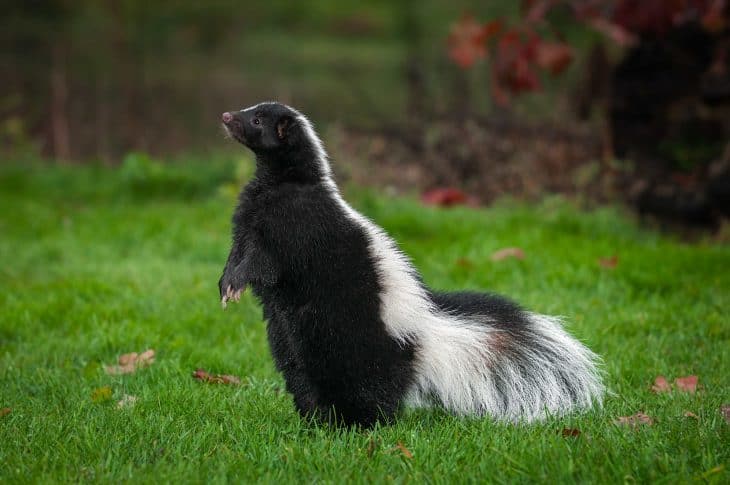
Skunks make for quite the iconic animal. Their distinctive appearance and defensive ability put them among animals that are most recognizable to people around the world. Learn more about this amazing creature with these 40 skunk facts.
Quick Facts
Essential Facts
Interesting Facts
- Skunks typically grow between 40 and 94 cm long.
- Their weight also usually varies between 500 g and 8.2 kg.
- Skunks also have five toes on every foot.
- Most skunks usually live for only a year.
- Skunks in the wild can rarely reach a maximum age of up to 7 years.
- Skunks first evolved in North America as far back as the Pleistocene Epoch, around 1.8 million years ago.
- They began spreading south to Central and South America around 70,000 years ago.
- Skunks flourished across North America after the last Ice Age ended around 10,000 years ago.
- The Native Americans kept skunks as pets long before Europeans arrived in the Americas.
- Christopher Columbus mentioned skunks among the American animals he encountered in the New World.
- Europeans became widely aware of skunks in the 17th century.
- American farmers kept tame skunks in the 19th century to keep mice and rats away.
- Most US states banned the taming of skunks in the 20th century, as part of measures to contain the spread of rabies.
- The legal status of skunks in the US experienced reforms in the 1990s.
- Canada followed the American example in the 2000s.
- Stink badgers from Asia make up their closest relatives.
- The skunk’s other relatives include polecats and weasels.
- Skunks also enjoy the “least concern” designation for conservation purposes.
- Skunks sometimes enter houses to open and root through cupboards.
- They also sometimes crawl into reclining chairs and other machines.
Table of Contents
Was this page helpful?
Our commitment to delivering trustworthy and engaging content is at the heart of what we do. Each fact on our site is contributed by real users like you, bringing a wealth of diverse insights and information. To ensure the highest standards of accuracy and reliability, our dedicated editors meticulously review each submission. This process guarantees that the facts we share are not only fascinating but also credible. Trust in our commitment to quality and authenticity as you explore and learn with us.
